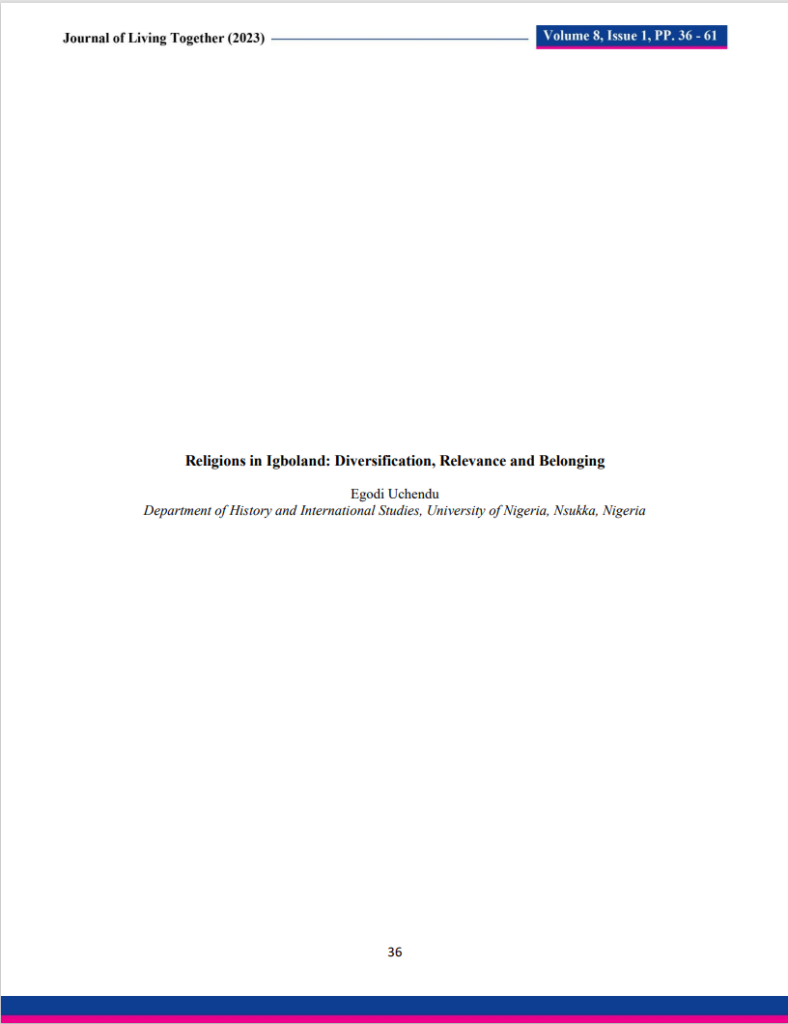Diplomacy, Development and Defense: Faith and Ethnicity at the Crossroads Opening Speech
Opening and Welcoming Remarks delivered at the 2015 Annual International Conference on Ethnic and Religious Conflict Resolution and Peacebuilding held in New York on October 10, 2015 by the International Center for Ethno-Religious Mediation.
Speakers:
Cristina Pastrana, ICERM Director of Operations.
Basil Ugorji, President and CEO of ICERM.
Mayor Ernest Davis, Mayor of the City of Mount Vernon, New York.
Synopsis
Since the earliest times, human history has been punctuated by violent conflict among ethnic and religious groups. And since the beginning there have been those who have sought to understand the causes behind these events and grappled with the questions around how to mediate and mitigate conflicts and bring about peaceful resolution. In order to explore recent developments and emerging thinking supporting modern approaches to diffuse current conflicts, we have selected the theme, The Intersection of Diplomacy, Development and Defense: Faith and Ethnicity at the Crossroads.
Early sociological studies supported the premise that it is poverty and lack of opportunity that drive marginalized groups to violence against those in power, which can metastasize into hatred fueling attacks against anyone belonging to a “different group”, for example by ideology, lineage, ethnic affiliation and/or religious tradition. So the developed world’s peacebuilding strategy from the mid-20th century forward became focused on eradicating poverty and encouraging democracy as a way of alleviating the worst of social, ethnic and faith-based exclusion.
During the last two decades, there has been increasing interest in the triggers, mechanics and dynamics that launch and sustain radicalization that pits people against one another resulting in violent extremism. Today, last century tactics have been paired with adding military defense into the mix, based on the assertions of political leadership, as well as some scholars and practitioners that the training and equipping of foreign armies by our own, when combined with collaborative development and diplomatic efforts, offers a better, more proactive approach to peacebuilding. In every society, it is the history of the people that shape their governance, laws, economies and social interactions. There is a great deal of debate as to whether the recent shift to the “3Ds” (Diplomacy, Development and Defense) as part of U.S. foreign policy supports the healthy adaptation and evolution of societies in crisis, the improvement of stability and the likelihood of sustained peace, or whether it is actually disruptive to the overall social well-being in the nations where the “3Ds” are implemented.
This conference will host speakers from a variety of disciplines, fascinating and well informed panels and what is sure to be very lively debate. Often, diplomats, negotiators, mediators and interfaith dialogue facilitators are uncomfortable working alongside military members believing their presence to be antagonistic. Military leadership frequently finds challenges to carrying out their support missions subject to the broader timelines and impenetrable command structure of diplomats. Development professionals regularly feel stymied by the security regulations and policy decisions imposed by their diplomatic and military colleagues. Local populations on the ground committed to improving the safety and quality of life of their families while maintaining the cohesion of their people find themselves confronted with new and untested strategies in what are often dangerous and chaotic environments.
Through this conference, ICERM seeks to promote scholarly research with practical application of the “3Ds” (Diplomacy, Development and Defense) to peacebuilding between peoples, or among ethnic, religious or sectarian groups both within and across borders.

